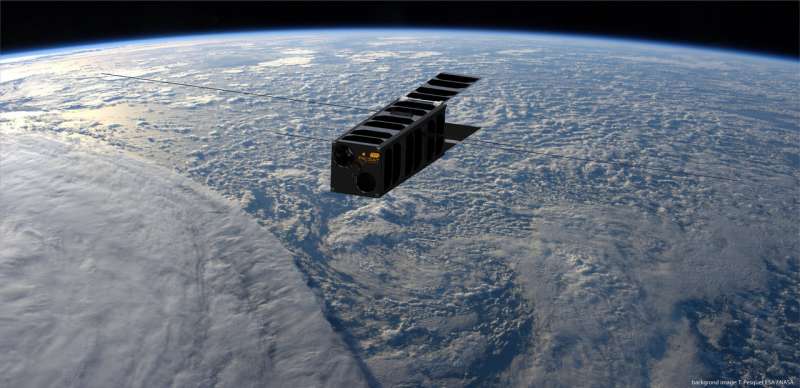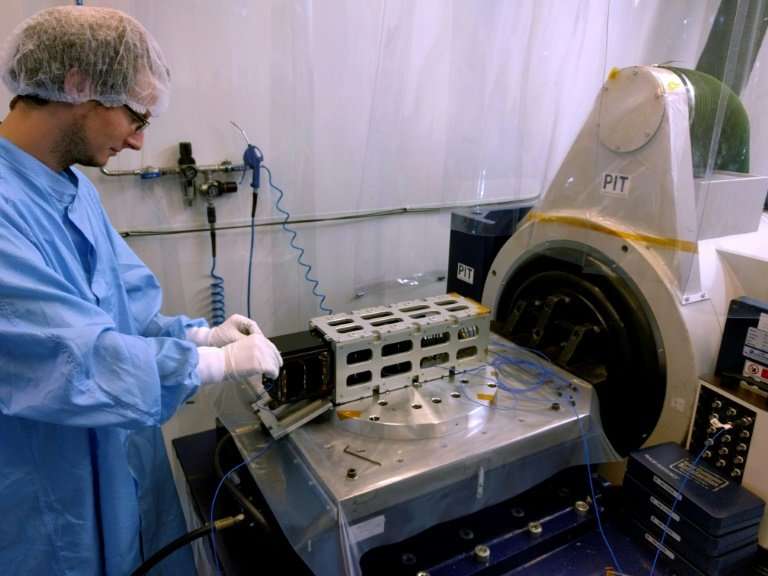Champagne box-sized satellite to probe distant planet

France is set to launch a champagne box-sized mini satellite into Earth orbit on Friday to study a mysterious, juvenile planet system in our Milky Way galaxy, mission controllers said.
The PicSat orbiter's target is the massive star Beta Pictoris, some 60 light years from Earth in the southern constellation of Pictor (The Painter's Easel), and its planet Beta Pictoris b—a gassy giant.
Built at the Paris Observatory's LESIA laboratory, with European backing, PicSat is due to be launched in the early-morning hours of Friday on an Indian PSLV rocket.
It will orbit our planet at an altitude of some 500 kilometres (310 miles), hoping to learn more about Beta Pictoris b by observing the next time it transits its host star, appearing as a dot on the bright surface as seen from Earth's perspective.
This once-in-18-year transit is expected some time in 2018, mission leader Sylvestre Lacour, an astrophysicist at France's CNRS research institute, told AFP.
"We are not 100-percent sure that the transit will happen" during PicSat's one-year lifetime, he said, as "the orbit of Beta Pictoris b is not well-known."
If not, "we will observe other, secondary objects orbiting the star."
By measuring how much light a planet blocks out as it transits its star, astronomers can glean details about its size and the composition of its atmosphere.
PicSat measures 10x10x30 centimetres (4x4x12 inches), "the size of a champagne box", said Lacour.

Planet in a spin
It comes equipped with a telescope for fact-gathering, and solar panels to power all its systems. Weighing in at 3.5 kilogrammes (7.7 pounds), the satellite's power consumption is a mere 5 W, similar to that of an economical light bulb.
Discovered in 1984, Beta Pictoris has a mass about 1.8 times that of our Sun.
It is young in astronomical terms—only about 20 million years old compared to the Sun's 4.5 billion years.
It is surrounded by a huge disc of gas and dust—the materials from which planets, asteroids and comets are formed—making it an ideal subject for studying the mechanism by which solar systems evolve.
Beta Pictoris b is about 16 times larger and 3,000 times more massive than Earth, with days lasting about eight hours. It orbits its star at a distance eight times that of Earth to the Sun.
In 2014, scientists said it spins at a breakneck speed of some 25 kilometres per second (90,000 kph or 56,000 miles per hour).
© 2018 AFP





















